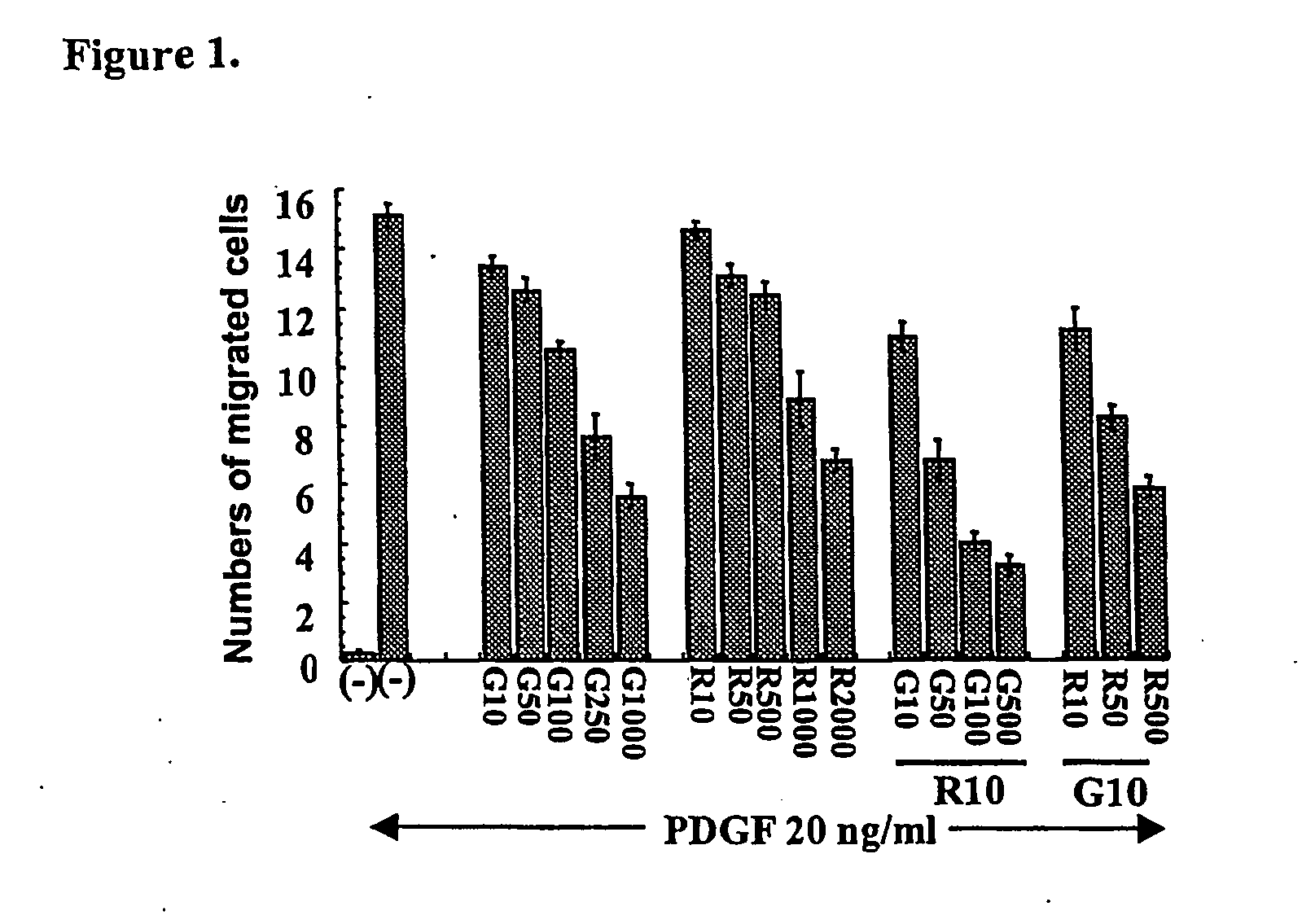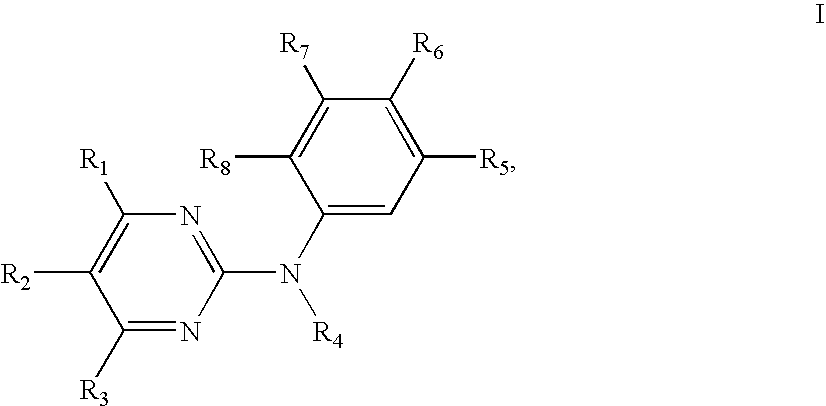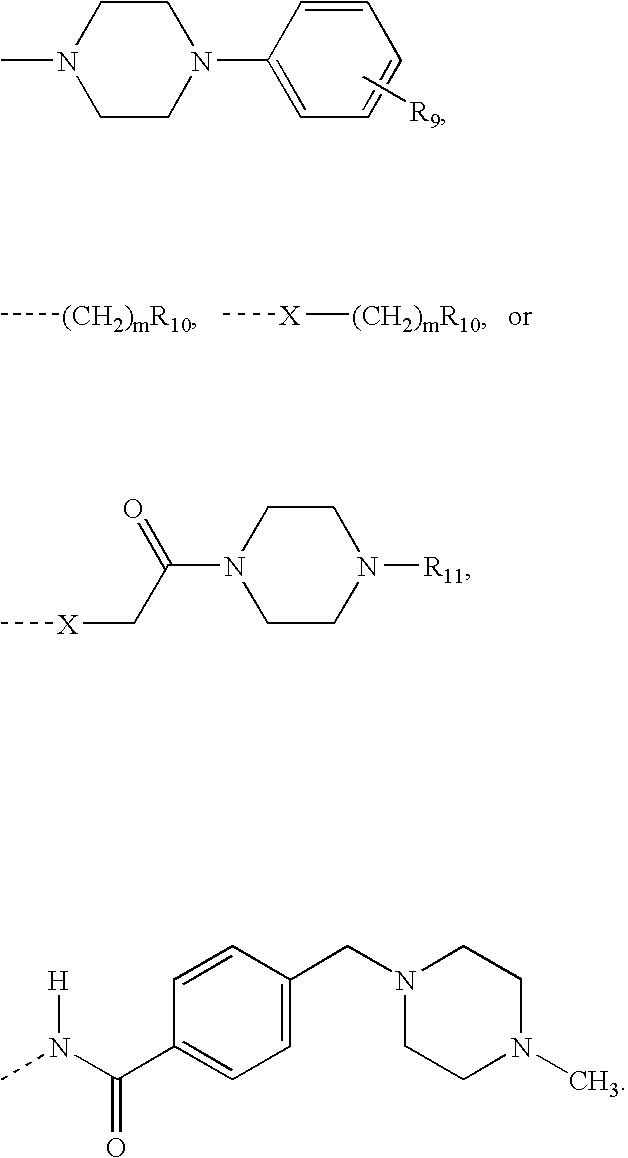Methods and compounds for the treatment of vascular stenosis
a vascular stenosis and composition technology, applied in the direction of drug compositions, peptides, cardiovascular disorders, etc., can solve the problems of high risk and high cost of by-pass surgery, the proportion of the myocardium to become ischemic, and the inability to bypass surgery, etc., to achieve the effect of inhibiting biological activity
- Summary
- Abstract
- Description
- Claims
- Application Information
AI Technical Summary
Benefits of technology
Problems solved by technology
Method used
Image
Examples
example 1
In Vivo Testing of Coated Stents in a Porcine Coronary Artery Model
[0091] This preliminary study is conducted to assess the ability of rapamycin released from ε-caprolactone-co-glycolide copolymer-coated stents to inhibit intimal hyperplasia in vivo. Fourteen days after receiving rapamycin-loaded or control polymer coated stents, the male-Yorkshire pigs are euthanized and the coronary arteries removed, the vessels prepared for histological evaluation and analyzed for the amount of intimal growth. Through comparison to control metal stents and stents containing polymer only, the in vivo ability of rapamycin to prevent neointimal growth can be determined.
[0092] Ethylene oxide-sterilized Palmaz-Schatz stents are implanted under sterile conditions in anesthetized farm pigs weighing 38 to 48 kg. Twenty-four hours prior to stent implantation, animals are given aspirin (325 mg, p.o., qd) and ticlopidine (250 mg, p.o., qd) to control chronic thrombosis; both aspirin and ticlopidine are co...
example 2
Effects of Gleevec and Rapamycin on Smooth Muscle Cell Proliferation and Migration
[0094] In vitro studies were performed to examine the dose response of Gleevec and rapamycin on human aortic vascular smooth muscle cells (HASOM cells). Cell migration was measured using a 24-well Boyden-chamber (Corning Costar Corp, Cambridge, Mass.). Each well had an insert containing a polycarbonate filter with eight μm pores. These membranes were coated with 0.1% gelatin for eight hours, then aspirated and allowed to dry for two hours. The cells were allowed to grow to 70% confluence and then treated with media containing 1% fetal calf serum and drug compounds (Gleevec alone, rapamycin alone and Gleevec and rapamycin together at the concentrations indicated in FIG. 1) for 48 hours prior to the migration assay. It should be noted that rapamycin does not block migration in this assay if the 48 hour incubation is not used (Poon et al., J. Clin. Invest. 98:2277-2283, 1996). The cells were harvested in...
PUM
| Property | Measurement | Unit |
|---|---|---|
| time | aaaaa | aaaaa |
| time | aaaaa | aaaaa |
| time | aaaaa | aaaaa |
Abstract
Description
Claims
Application Information
 Login to View More
Login to View More - R&D
- Intellectual Property
- Life Sciences
- Materials
- Tech Scout
- Unparalleled Data Quality
- Higher Quality Content
- 60% Fewer Hallucinations
Browse by: Latest US Patents, China's latest patents, Technical Efficacy Thesaurus, Application Domain, Technology Topic, Popular Technical Reports.
© 2025 PatSnap. All rights reserved.Legal|Privacy policy|Modern Slavery Act Transparency Statement|Sitemap|About US| Contact US: help@patsnap.com



